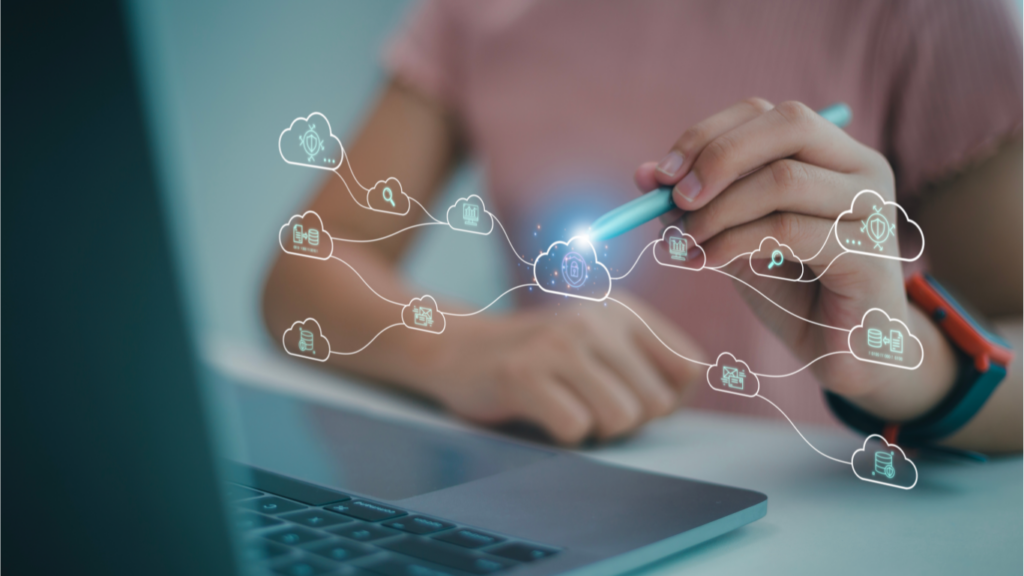Understanding AI in Everyday Life
Artificial Intelligence (AI) seamlessly integrates into many aspects of our daily routines, enhancing our ability to perform tasks effortlessly. Its transformative impact extends beyond mere convenience, fundamentally altering how we interact with technology.
Definition and Scope of AI
AI refers to the simulation of human intelligence processes by machines. These processes include learning (acquiring information and rules for using it), reasoning (using rules to reach approximate or definite conclusions), and self-correction.
AI systems can be classified into two main types: narrow AI (designed for a specific task) and general AI (exhibiting human-like intelligence across various tasks).
Examples of narrow AI include virtual assistants and recommendation algorithms. General AI, still a theoretical concept, would perform any intellectual task that a human can.
Brief History of AI Development
AI’s journey began in the 1940s with the advent of electronic digital computers. In 1956, the term “artificial intelligence” was coined at the Dartmouth Conference, marking the birth of AI as a field.
The development of the first AI programs, such as the Logic Theorist and General Problem Solver, laid the groundwork. The 1970s saw an AI winter due to reduced funding, but interest revived in the 1980s with expert systems.
The 1990s witnessed significant milestones like IBM’s Deep Blue defeating chess champion Garry Kasparov. Recent decades have seen exponential growth due to advances in machine learning, leading to impactful applications in various domains.
AI Technologies Transforming Daily Activities
I’ve observed AI’s transformative effect on our daily activities, enhancing convenience and efficiency in unprecedented ways. From managing home environments to advancing healthcare, AI technologies continue to revolutionize our lives.
Virtual Assistants and Smart Homes
Virtual assistants like Amazon’s Alexa and Google Assistant streamline everyday tasks. I’ve used these assistants to control smart home devices, set reminders, and get weather updates. AI in smart homes enables automation of lighting, security systems, and thermostats. For instance, smart thermostats adjust temperatures based on user preferences and habits, saving energy and money.
AI in Healthcare
AI’s impact on healthcare is profound. Diagnostic algorithms, such as those used in imaging, analyze medical images faster and more accurately than traditional methods. I’ve read about AI-powered wearable devices that monitor vital signs and alert users of potential health issues. In personalized medicine, AI analyzes patient data to recommend tailored treatments, improving outcomes and reducing adverse effects.
Autonomous Vehicles
Autonomous vehicles epitomize AI’s innovation in transportation. Companies like Tesla and Waymo lead the charge with self-driving cars. These vehicles use AI to interpret sensor data and navigate complex environments. I’ve seen reports indicating that autonomous vehicles reduce human error, enhance road safety, and improve traffic flow.
AI in Education
- Education benefits significantly from AI tools.
- The rise of adaptive learning platforms like Khan Academy that tailor educational content to individual learning styles.
- AI also automates administrative tasks, allowing educators to focus on teaching.
- Tools like plagiarism checkers and automated grading systems increase efficiency in classrooms.
AI technologies continuously shape and improve our daily activities, driving advancements across multiple sectors.
The Impact of AI on Work and Employment

AI is redefining how we work, influencing job markets and the nature of employment. Below, I explore key areas where AI is making significant changes.
Automation and Job Displacement
AI-driven automation is transforming industries by taking over repetitive and mundane tasks. For instance, manufacturing uses AI-enabled robots for assembly lines, reducing human error and increasing productivity. In customer service, chatbots handle inquiries, freeing up human agents for complex issues. According to a McKinsey report, around 15% of global work activities could be automated by 2030.
New Job Opportunities in AI
While AI displaces some jobs, it also creates new opportunities. Roles such as:
- AI specialists
- data scientists
- machine learning engineers
are in high demand. Companies need these experts to develop and maintain AI systems. LinkedIn’s Emerging Jobs Report 2020 noted a 74% annual growth rate for AI specialist roles over the past four years. This shift points to a growing market for skilled individuals in AI-related fields, ensuring that technology does not just take jobs but also creates new ones.
Ethical Considerations and Challenges
AI brings numerous advancements, but it’s essential to address the ethical considerations and challenges it introduces.
Privacy Concerns
AI systems collect and analyze vast amounts of data, often raising privacy concerns. Data privacy is crucial when AI applications handle personal information in areas like healthcare and finance. For example, smart home devices constantly gather data about users’ daily routines and preferences, which could be exploited if not properly protected. Ensuring robust data protection measures can help mitigate these concerns.
Bias in AI Systems
AI systems can inherit biases present in their training data, leading to unfair outcomes. Biased AI has significant implications in areas like hiring and law enforcement. For instance, if an AI recruiting tool is trained on biased historical data, it might favor certain demographics. Addressing bias requires implementing fair training practices and constant monitoring of AI outputs to ensure equitable treatment for all users.
Regulatory Issues
AI’s rapid development outpaces existing regulatory frameworks, creating challenges in governance. Regulators must balance innovation with oversight to prevent misuse and ensure public safety. For instance, autonomous vehicles introduce new legal questions about liability in accidents. Governments and organizations must collaborate to establish comprehensive regulations that foster safe AI deployment while promoting technological growth.


 Amelie Glover played a pivotal role in shaping the success of News Flip Network through her expertise and dedication. With a keen eye for detail, she focused on ensuring the platform’s content flows smoothly, making it both engaging and informative. Glover’s efforts in organizing the site’s structure and managing editorial tasks helped create a seamless user experience, enhancing the accessibility of news for readers around the world.
Amelie Glover played a pivotal role in shaping the success of News Flip Network through her expertise and dedication. With a keen eye for detail, she focused on ensuring the platform’s content flows smoothly, making it both engaging and informative. Glover’s efforts in organizing the site’s structure and managing editorial tasks helped create a seamless user experience, enhancing the accessibility of news for readers around the world.